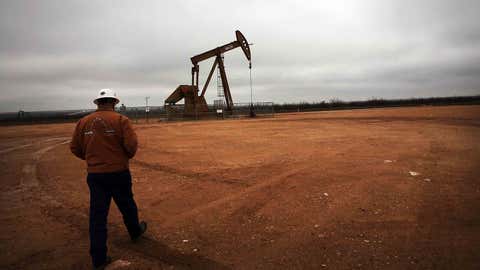A new Dallas Fed Energy Survey claims oil and gas activity still grew in the fourth quarter 2022 but also showed a slowdown from previous months.
The survey by the Eleventh District of the Federal Reserve Bank of Dallas was based on the response of oil and gas executives. It also showed activity was positive despite a decline from the third quarter. The district includes Texas, northern Louisiana and southern New Mexico.
Oil and natural gas production increased at a slightly slower pace compared with the prior quarter, according to executives at exploration and production (E&P) firms. The oil production index declined to 25.8 in the fourth quarter from 31.7 in the third. Likewise, the natural gas production index moved down, to 29.4 from 35.6.
Firms reported rising costs for an eighth consecutive quarter, with the indexes remaining elevated. However, the rate of those increases has slowed. Among oilfield services firms, the input cost index was 61.8 versus 83.9 last quarter. Among E&P firms, the finding and development costs index was 52.5, a modest decline from 64.7 last quarter. Additionally, the lease operating expenses index dropped 22 points to 48.4.
It is taking longer for firms to receive materials and equipment, although the pace at which those delays is growing has moderated. The supplier delivery time index remained positive but declined to 14.4 in the fourth quarter from 28.4 in the third. Among oilfield services firms, the measure of lag time in delivery of services edged down to 20.0 from 21.1, remaining well above average.

Oilfield services firms reported broad-based improvement, with key indexes remaining solidly positive. The equipment utilization index fell to 32.8 in the fourth quarter from 55.2 in the prior quarter. The operating margin index edged up to 25.9 from 25.4. The index of prices received for services remained positive but declined to 43.6 from 64.9.
All labor market indexes in the fourth quarter remained elevated, pointing to strong growth in employment, hours and wages. The aggregate employment index posted an eighth consecutive positive reading but moved down to 25.7 from last quarter’s series high of 30.0. The aggregate employee hours index moved down to 27.7 from 33.3 in the prior quarter. The aggregate wages and benefits index remained positive but declined to 40.2 from 47.3.
Optimism waned in the fourth quarter as the company outlook index posted a 10th consecutive positive reading but fell 20 points, below the series average, to 13.1. The overall outlook uncertainty index increased to 40.1 from 35.7, suggesting growing uncertainty, especially among E&P firms. The uncertainty index was 30.9 for services firms versus 45.4 for E&P firms, with 53 percent of E&P firms reporting an increase in uncertainty.
On average, respondents expect a West Texas Intermediate (WTI) oil price of $84 per barrel by year-end 2023; responses ranged from $65 to $160 per barrel. Survey participants expect Henry Hub natural gas prices of $5.64 per million British thermal units (MMBtu) at year-end. For reference, WTI spot prices averaged $73.67 per barrel during the survey collection period, and Henry Hub spot prices averaged $5.93 per MMBtu.
Source: Bank press release





